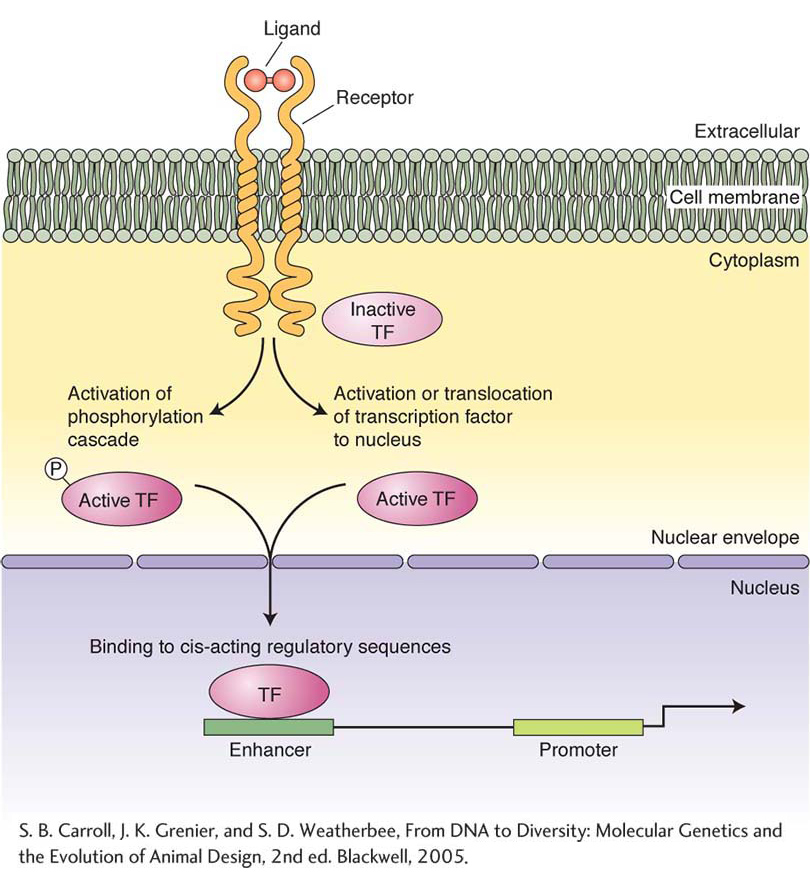A typical signal- transduction pathway

Figure 13-16: Most signaling pathways operate through similar logic but have different protein components and signal- transduction mechanisms. Signaling begins when a ligand binds to a membrane- bound receptor, leading to the release or activation of intracellular proteins. Receptor activation often leads to the modification of inactive transcription factors (TF). The modified transcription factors are translocated to the cell nucleus, where they bind to cis- acting regulatory DNA sequences or to DNA- binding proteins and regulate the level of target- gene transcription.
[S. B. Carroll, J. K. Grenier, and S. D. Weatherbee, From DNA to Diversity: Molecular Genetics and the Evolution of Animal Design, 2nd ed. Blackwell, 2005.]
[Leave] [Close]